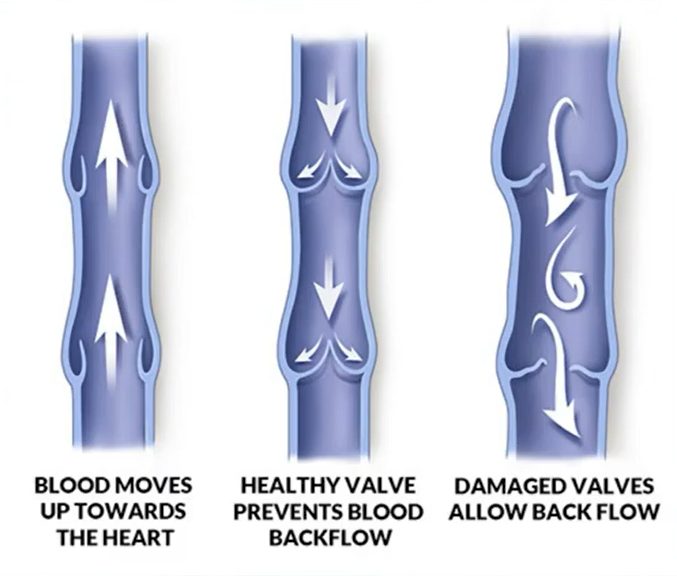This is Dr. David Draughn with Vein Specialists of the Carolinas. I want to talk to you about venous reflux. Most everyone has heard of esophageal reflux. With venous reflux, the word reflux means the same thing in both of those entities.
Reflux is an engineering term that means reverse flow. So, with the esophageal reflux, gastric acid is moving up the esophagus and causing inflammation, which it’s not supposed to do. With venous reflux, the blood in your veins is supposed to flow from the periphery, out in your fingertips and your toes, back to your heart. With venous reflux, it can’t do that. It literally flows backwards.
Venous Reflux Symptoms
Venous reflux can be asymptomatic. You can have it and not even know it, and it won’t hurt a thing. But for many people, when the reflux is present, blood is literally flowing backwards, and it’s making the downstream tributaries enlarge, turning into varicose and spider veins. For other people, that reflux will make your legs swell. For other people, the leg’s skin gets damaged and turns brown. And some people, it’ll go so far as to cause the skin not to be able to survive, and you’ll end up with a venous leg ulcer.
If you have reflux and you don’t have any symptoms like swelling, aching, heaviness, visible varicose veins, or any complaints whatsoever, you don’t have to do anything about it. But the vast majority of people with venous reflux have symptoms that their other doctors can’t figure out what the symptoms are from, and it’s actually from the underlying reflux. We do a standing up ultrasound to detect the reflux. If you have reflux and all these underlying symptoms and it’s felt that those two things are correlated with each other – the vast majority of people get dramatic relief of their symptoms by treating the reflux.
Overall, women are more likely to have vein problems than men. So by age 50, about 50% of women will have some visible vein issues. About 35% of men will. So venous reflux is is highly treatable when it happens in the superficial venous system.
Venous Reflux Treatment
We have two venous systems – a deep and a superficial system. The superficial system is expendable, so fortunately we can just simply destroy the vein and the reflux will stop. The blood that was flowing through that vein will find its way to the deep system through another route. If you have deep venous reflux and it’s symptomatic causing pain or symptoms or swelling, the mainstay of treatment is graduated compression garments. These garments are higher pressure at the bottom, and they get lower pressure at the top helping blood and fluid move uphill in your legs.
Venous Reflux Causes
So I’ve explained that venous reflux is the reverse flow of blood. But what causes that? Well, the main cause is from broken one way venous valves. If you look at the following diagram, it illustrates competent valves and those that have become incompetent.

You can see that the valve cusps don’t meet and blood is literally pulled downhill by gravity. Left untreated, venous reflux will not get better on its own. The valves cannot repair themselves. And so the continued back pressure on the venous system will make veins enlarge, make the tissue swell, and can lead down the road to venous leg ulceration. Everybody’s different at how fast this will progress. For some, it barely progresses at all, and other people will go on to get a venous leg ulcer. Venous disease is the “common cold” of leg pain. And reflux is the number one cause of venous disease.
This is Dr. David, Draughn with Vein Specialists of the Carolinas. Thanks for letting me educate you a little bit about vein disease.
And remember, all I do is veins, all day, every day.
